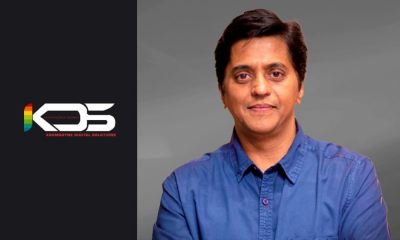OOH Adtech
“DOOH Media buying in India is still based on direct negotiations and personal relationships”
Gautam Bhirani, Managing Director, Eyetalk Media Ventures highlights that traditional practices, fragmented systems, and infrastructure gaps hinder AdTech adoption in India’s OOH industry. He calls for a mindset shift and standardization to realize programmatic DOOH’s potential.
Digital out-of-home (DOOH) advertising and programmatic solutions hold the promise of transforming India’s out-of-home (OOH) advertising industry through data-driven efficiencies and transparency. However, their adoption has been slow, limited by entrenched practices and systemic challenges. Gautam Bhirani, Managing Director of Eyetalk Media Ventures, shares his views on the current state of AdTech in India’s OOH sector and the way forward.
Traditional mindset hinders adoption
Gautam highlights that media buying in India’s OOH ecosystem remains largely relationship-driven, a long-standing practice that resists change. “Media buying in India is still based on direct negotiations and personal relationships rather than data. This mindset creates a significant hurdle for AdTech adoption,” he says.
Despite technological advancements and the rise of DOOH, many campaigns still follow traditional processes. Gautam points out that while brands are beginning to explore innovative concepts like share of voice, peak-hour visibility, and daypart integration, these efforts often sidestep programmatic solutions. The deep cultural reliance on personal connections has slowed the adoption of more efficient, technology-driven methods.
Lack of standardisation adds complexity
Another challenge facing the Indian OOH industry is the lack of standardisation across platforms and systems. Gautam notes that multiple fragmented solutions complicate the adoption of programmatic buying processes. “The absence of a unified standard makes it harder for advertisers and agencies to fully embrace programmatic systems. For media owners, managing multiple platforms adds unnecessary operational complexity,” he explains.
This fragmentation prevents the industry from reaping the full benefits of programmatic DOOH, leaving both media owners and advertisers hesitant to invest heavily in AdTech solutions.
Low volumes and short campaigns
Gautam observes that while some programmatic platforms have successfully attracted digital-first brands into the DOOH space, the volume of business remains insufficient to impact the broader ecosystem. He points out that the shift from long-term campaigns to shorter bursts of advertising has created new challenges for media owners.
“Programmatic DOOH campaigns often last less than a week, compared to the traditional 15- to 30-day campaigns. While this aligns with the fast-paced nature of digital marketing, it results in lower revenues for media owners who are accustomed to stable, longer-term bookings,” says Gautam. This disconnect between the promise of programmatic DOOH and its actual profitability is a major stumbling block for media owners.
Technical challenges and infrastructure gaps
Technical hurdles further compound the slow adoption of AdTech in India. Gautam highlights the lack of adequate digital infrastructure in many parts of the country, especially outside urban centres. Even in cities where infrastructure exists, technical glitches and inconsistencies in programmatic platforms deter smooth adoption.
“Programmatic platforms require advanced systems and expertise. Many media owners and advertisers find the transition daunting and prefer to stick to manual methods they are familiar with,” he explains.
Moving forward: a shift in mindset is essential
For AdTech to fully realise its potential in India’s OOH sector, Gautam believes that a fundamental shift in mindset is necessary. Both media owners and OOH agencies need to move beyond relationship-based buying and embrace the efficiencies, transparency, and scalability that AdTech offers.
“Until the industry lets go of traditional practices and truly embraces technology, programmatic solutions will remain a promise rather than a reality. The impact on media owners’ profitability and the growth of the DOOH market will remain limited,” he concludes.
-

 Campaigns
CampaignsNetflix India goes full green light on OOH with Squid Game season 2
-

 Creative Concepts
Creative ConceptsSkechers launches 3D cricket shoe Bus Shelters in Mumbai
-

 Sustainability
SustainabilityStatus of sustainable printing in the OOH Industry: Challenges and pathways forward
-

 Sustainability
SustainabilityGreen Advertising: Insights on Sustainability in Out-of-Home Campaigns

























